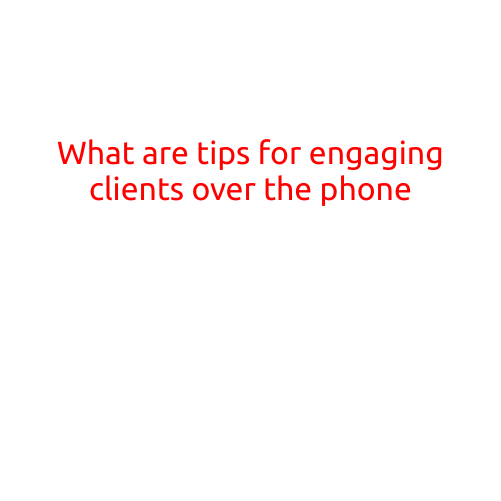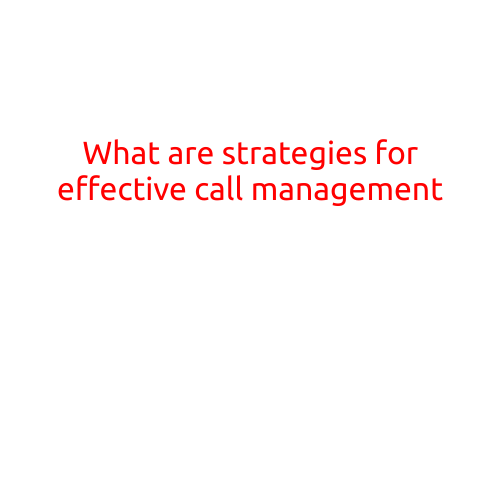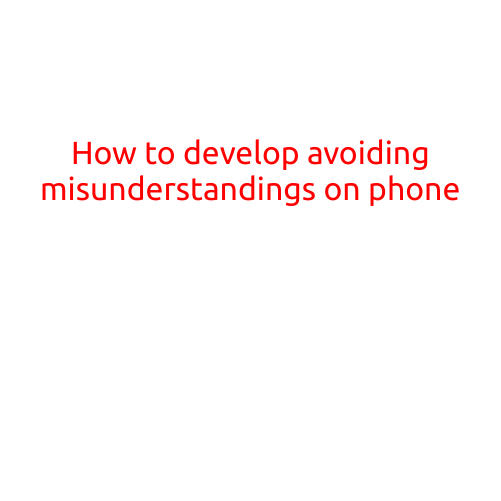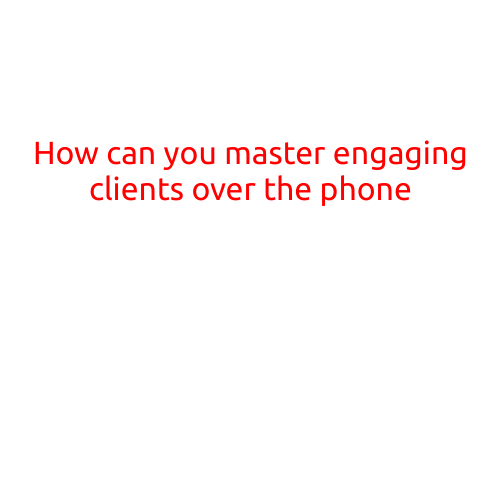
What are Tips for Engaging Clients Over the Phone?
In today’s digital age, phone conversations may seem old-fashioned, but they remain an essential aspect of building and maintaining relationships with clients. Whether you’re a business owner, customer service representative, or sales professional, effective phone communication is crucial for establishing trust, conveying information, and closing deals. In this article, we’ll explore the top tips for engaging clients over the phone and taking your phone conversations to the next level.
Tip 1: Prepare Before the Call
Before making the call, do your research. Gather relevant information about the client, their business, and their needs. Review their profile, history, and previous interactions (if any). This will help you tailor your conversation, show enthusiasm, and demonstrate your expertise. Additionally, have all necessary documents, notes, and quotes ready to refer to during the call.
Tip 2: Start with a Strong Introduction
When answering the phone, start with a friendly and professional greeting. Introduce yourself, your company, and a brief summary of the purpose of the call. This sets the tone for the conversation and establishes a positive connection.
Tip 3: Active Listening is Key
Active listening is crucial for engagement. Pay attention to the client’s words, tone, and body language (even though you can’t see them). Repeat back what you’ve understood from their concerns or questions to ensure you’re on the same page. This not only helps clarify their needs but also shows that you’re genuinely interested in their situation.
Tip 4: Build Rapport and Establish Trust
Personalize your conversation by finding common ground or shared interests. Share a relevant anecdote or a success story that aligns with their concerns. Be empathetic, and acknowledge their frustrations or challenges. By building rapport, you can establish a sense of trust, which is essential for turning a conversation into a lasting relationship.
Tip 5: Ask Open-Ended Questions
Instead of asking yes or no questions, use open-ended questions that encourage the client to share more about their needs, pain points, or goals. This not only provides valuable insight but also keeps the conversation engaging and dynamic.
Tip 6: Use Verbal and Non-Verbal Cues
Employ verbal cues, such as asking follow-up questions or summarizing key points, to keep the conversation flowing. Use non-verbal cues, like nodding or making supportive noises, to show that you’re engaged and interested. These subtle cues can make a significant difference in how the client perceives your conversation.
Tip 7: Keep the Conversation Focused
Stay focused on the client’s needs and avoid getting sidetracked. Keep the conversation on track by highlighting key takeaways, key benefits, or next steps. Avoid using jargon or overly technical language, and instead, use simple, clear language that’s easy to understand.
Tip 8: Encourage Participation
Encourage the client to participate in the conversation by asking their opinion, sharing their experiences, or exploring different scenarios. This not only helps them feel more invested in the conversation but also provides valuable feedback and insights.
Tip 9: Wrap Up the Call Professionally
Conclude the call by summarizing the key points, outlining next steps, and reiterating your commitment to their needs. Leave a clear agenda for the next step, and make sure the client knows who to contact for follow-up questions or concerns. End the call with a positive and professional tone, and make sure to follow up on any commitments you made during the conversation.
Tip 10: Follow Up
After the call, send a brief summary or recap of the conversation, along with any necessary documents or additional information. Follow up with the client to ensure they received the requested materials and to answer any further questions. This demonstrates your attention to detail and commitment to delivering exceptional service.
By incorporating these tips into your phone conversations, you’ll be better equipped to engage with clients, build trust, and establish lasting relationships. Remember to stay focused, empathetic, and enthusiastic, and you’ll be well on your way to phone communication mastery.





